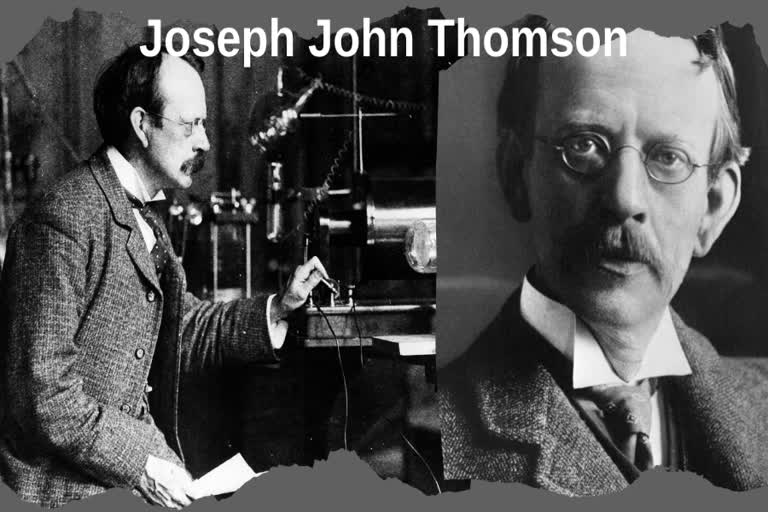Hyderabad: In 1918, he became Master of Trinity College, Cambridge, where he remained until his death. Joseph John Thomson died on 30 August 1940 at the age of 83. His ashes rest in Westminster Abbey, near the graves of Sir Isaac Newton and his former student, Ernest Rutherford.
Awards and Recognition
- Plaque commemorating J. J. Thomson's discovery of the electron outside the old Cavendish Laboratory in Cambridge
- Adams Prize (1882)
- Royal Medal (1894)
- Hughes Medal (1902)
- Nobel Prize for Physics (1906)
- Elliott Cresson Medal (1910)
- Copley Medal (1914)
- Franklin Medal (1922)
- In 1991, the Thomson (symbol: Th) was proposed as a unit to measure the mass-to-charge ratio in mass spectrometry in his honor.
- J J Thomson Avenue, on the University of Cambridge campus, is named after Thomson.
- In November 1927, J.J. Thomson opened the Thomson building, named in his honor, in the Leys School, Cambridge.
Education & Career
- His early education was in small private schools where he demonstrated outstanding talent and interest in science. In 1870 he was admitted to Owens College at the unusually young age of 14.
- .He moved on to Trinity College, Cambridge, in 1876. In 1880 he obtained his BA in mathematics (Second Wrangler in the Tripos and 2nd Smith's Prize). He applied for and became a Fellow of Trinity College in 1881.
- Thompson received his MA (with Adams Prize) in 1883. Thomson was elected a Fellow of the Royal Society on 12 June 1884 and served as President of the Royal Society from 1915 to 1920.
- On 22 December 1884 Thomson was chosen to become Cavendish Professor of Physics at the University of Cambridge
- .The appointment caused considerable surprise, given that candidates such as Richard Glazebrook were older and more experienced in laboratory work. Thomson was known for his work as a mathematician, where he was recognized as an exceptional talent.
